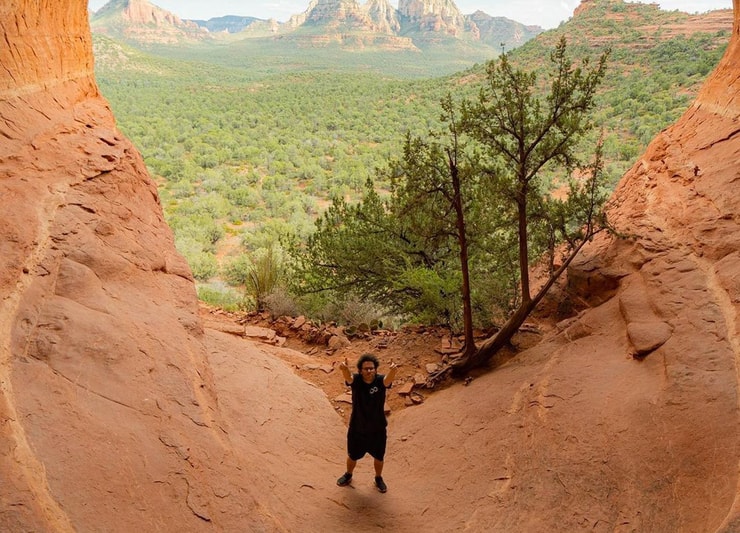For newbie and seasoned traders alike, the idea of playing the Asian stock market might seem exotic. It’s not so different from playing the U.S. stock market or the European stock market — but you need to educate yourself on whichever market you choose.
Having said that, it’s my opinion that most successful traders, like my top students, are specialists. What do I mean? They focus on one instrument, like penny stocks, forex, or options. And they choose one market, like the domestic stock market, the European stock market, or the Asian stock market.
Even the big boys — the banks with their fingers in many slices of the world financial pie — have dedicated teams for different markets.
For many traders, the domestic market is enough, but the Asian markets can present an opportunity. In this age of multinational corporations (MNC), it’s a good idea to understand markets in other regions.
You might even decide to jump in and trade …
Table of Contents
What Is the Asian Stock Market?
Asia’s securities markets date back over 150 years — and their stock exchanges, nearly as long.
Post-WWII industrial expansion, global trade, and population booms contributed to a surge in the Asian markets. In recent years the tech boom is a primary driver of fast-growing Asian economies.
Before you start looking for great Chinese penny stocks to trade, you should know that the ‘Asian stock market’ is actually many markets. For example, Japan, China, Hong Kong, Taiwan, India, Malaysia, South Korea, and Singapore all have their own exchanges. There are 49 countries (nation states) in Asia.
That’s a lot of trading opportunities …
The three largest Asian exchanges are the Tokyo Stock Exchange, the Shanghai Stock Exchange, and the Hong Kong Stock Exchange. Combined, they have a trading volume of nearly $8 trillion per year (2015). For comparison, the NYSE had a trading volume of $20.61 trillion in 2011.
What does this mean for you as a trader? Considering all the Asian exchanges and thousands of listed securities, it’s a massive market …
Is it also a massive opportunity?
Benefits of Investing in the Asian Stock Market

2025 Millionaire Media, LLCAsian economies are booming. Although this year has seen some big drops in major Asian stock markets, Asian economies are still booming compared to much of the world.
Historically, Asia has a strong record for long economic booms. As a whole, Asia enjoys steady, fast-paced growth for several years.
At least seven Asian countries benefit from more than 50 years of gross domestic product (GDP) growth above 3.5% annually. And 11 Asian countries enjoy GDP growth higher than 5% for the last 20 years.
By comparison, the U.S. GDP growth rate fluctuates between roughly .5% and 3.8% annually since the 2008 financial crisis ended.
Some of the stronger Asian economies have multiple years of 6%+ GDP growth! China, in particular, has developed into one of the world’s economic growth powerhouses.
Asian markets are recovering? A year ago Asian stock market news focused on recovery. But during 2018, while the U.S. markets are roughly even for the year (at the time of writing), around two-thirds of Asian markets are down. The Shanghai exchange is in full bear territory — it’s over 20% down on the year.
I look at this two ways:
- As a trader, I look at market sentiment to understand what kinds of plays are available. But it doesn’t change the fact that I open and close positions in a relatively short period of time. You can make money trading penny stocks no matter what the overall market is doing.
- When an economy is growing but the stock market is dropping, there might be undervalued stocks to buy. It’s the classic buy-low, sell-high strategy that turned Warren Buffet into a billionaire.
There are Chinese penny stocks. Back to my way of doing things: trading. It’s important to note there are penny stocks in other countries. You can trade penny stocks in China, Japan, India, the Philippines — pretty much anywhere there’s a stock market.
Just as with day trading here in the U.S., you need knowledge. Educate yourself. This guide to finding penny stocks will help you. Expect to overcome barriers before you can trade. If you have any doubts about what you’re doing, stay away.
An opportunity to diversify. Investing in Asian markets can be a way to diversify your portfolio. Again, I think you need to be ready before you leap into it. Take your time. Do your research. I focus on day trading penny stocks here in the U.S. for a reason — it’s what I know.
A different time zone. This can be a huge opportunity if you want or need to trade at odd hours. For example, say you want to trade after your regular work hours. The Hong Kong stock market opens at 8:30 p.m. Eastern Time.
A word of caution: While it might seem like a great idea to start trading different markets at different hours …
… this is a degenerate gambler mentality!
You need time for research. You need time to step away from the screen and do things like eat and exercise. You need time to network with other traders (networking is one of my ace student Dominic’s 6 trading tips). Set your hours and trade. Win or lose, walk away at the end of the day.
With risk comes reward. There it is, plain and simple. The Asian markets present a new layer of risk and, consequently, a new layer of reward. Before you jump into the Asian market, review my Trader Checklist. Watch it more than once for best results.
Differences of Investing in the United States vs. the Asian Stock Market
Beware … different countries have different rules. If you’re going to trade these stocks, do your homework! Also, you’ll need to find a broker that allows you to trade the Asian stock markets.
For years, playing Asian penny stock markets was a lot like the wild west — few regulations and a lot of speculators. Imagine how ripe these markets are for classic pump-and-dump scams. All the more reason to do your research.
In the past few years there’s been talk of increasing regulations on penny stocks in Asia. This includes the Hong Kong and mainland Chinese stock markets.
Foreign markets are sympathetic to the U.S. stock market now more than ever. But it’s important to recognize that regional markets don’t always trend with the rest of the world. Economic outlook, trade regulations, and other events can influence the Asian financial markets.
One big difference: You won’t be able to use StocksToTrade as your trading platform or stock screener for the Asian stock market. It’s not set up for that now. I mention this because I helped develop the platform and there’s nothing like it out there. I consider it a distinct advantage for trading.
More Breaking News
- Analyzing NEGG’s Surge: Time to Act?
- Is It Too Late to Buy XCF Global Stock?
- Cleveland-Cliffs’ New Venture Ignites Market Excitement
What Time Does the Asian Market Open?
As there are so many different Asian stock exchanges, I won’t list all the times. This handy world stock market map shows you what markets are open at any given time. If you prefer a table format, check out this list of world stock exchange trading hours.
In general: Asian markets begin to open for the next day just hours after they close in the U.S. And in case you haven’t peeped a map in a while, remember that Asia is huge, with several different time zones. You need to know the relationship between the time zone of your location and the time zone where you want to trade.
Influence of the Chinese Stock Market on Asian Markets
China has a huge regional influence — and it extends right into the stock markets. In much the same way that U.S. markets have a strong worldwide influence, the Chinese stock market influences other Asian markets. When the Chinese market is down, other regional markets often follow suit. The same goes for when it’s up.
How to Invest in the Asian Stock Market

2025 Millionaire Media, LLC1. Importance of Fundamental Analysis
For investing — long-term style — I can’t emphasize the importance of fundamental analysis enough. You may know this is not my main strategy because I trade penny stocks. However, this is a valid way of determining the long-term value and opportunity of owning a company’s shares.
I don’t completely ignore fundamentals. Without some basic understanding, like what the company sells, you might miss an important news catalyst. You need to know what’s news and what’s not. That’s difficult if you don’t have some idea of the fundamentals.
2. Follow Asian Stock Market News Catalysts
One of the most important things I teach to my Trading Challenge students is to recognize news catalysts. Whether you’re trading weed stocks in the U.S. or micro-computer component stocks in Asia, news catalysts are often the drivers of big price action.
3. Use a Stock Screener
It doesn’t matter where you’re trading, you need to use a stock screener. The trading world is digital and fast paced. A stock screener will let you sift through thousands of stocks to find only those that meet specified criteria.
4. Do Not Trust Stock Promoters
Asian stocks, biotech stocks, weed stocks — it doesn’t matter what stock is being promoted …
… stock promoters make money by pumping stocks. That’s it.
Recently a very well-known financial newsletter publisher in the U.S. ran a ‘single stock retirement plan’ promo. The hyped stock is a well-known Asian computer component manufacturer. They make parts for more than one ‘household name’ tech company.
The hyped company is massive and profitable. It employs more than a million people worldwide. The newsletter that the ‘single stock retirement plan’ used for promotion is a good newsletter. But the hype around the stock was a complete pump move.
Ironically, it’s not even traded on U.S. markets yet. But if you go look at price action on the stock (hint for you sleuths: it trades on the Taiwan exchange) it’s pretty clear the promotion got some blood pumping and the stock price shot up … briefly.
This is the game of stock promoters. They make money by pumping stocks. Be wary.
5. Create an Asian Stock Watchlist
One of the first things I teach all my Trading Challenge students is to create a watchlist. Update it daily. Start learning patterns and price action by watching. If you haven’t signed up for my weekly watchlist, do it now. It’s a great way to start. (It’s U.S. based, however. You’re on your own for creating an Asian stock watchlist.)
The same applies to the Asian stock market — if you’re going to trade, you need a watchlist. It’s one of the most basic parts of your research. If you’re serious about trading the Asian markets, start your Asian stock watchlist today.
6. Pay Attention to Asian Stock Patterns
I think you’ll find many of the same stock market patterns in the U.S. and Asian markets. Most patterns we trade were first identified and characterized by Japanese rice traders.
There’s a great book about it called “Japanese Candlestick Charting Techniques” by Steve Nisen. It’s a great book for in-depth study of candlestick charts regardless of whether you decide to trade the Asian markets or not.
How Can You Explore Asian Market Opportunities?

2025 Millionaire Media, LLCRead Up
In many ways, a decision to invest in the Asian stock market is a decision to get back to basics. That’s because there are enough differences that you’ll need to spend some serious time studying.
As always, you can’t cheat success. If you’re going to invest in or trade the Asian markets, do it right. Get educated.
Seek Out Other Resources
There are plenty of books about the Asian markets available. Also, almost every financial website has an entire section devoted to the Asian stock market. It’s an ever-shifting landscape. You need to stay on top of what’s going on in the economies and markets where you plan to trade.
Seek Out a Money Manager
Sometimes I’m hard on money managers because they tend to give boring advice about money. It’s different from what I want to teach you, which is trading (it’s a lot more rewarding, in my opinion).
The thing is, when you’re talking about foreign markets you need to understand all the moving parts.
You have to deal with currency exchange, sourcing an appropriate broker, different regulations — the list goes on. A good money manager can advise you in these areas. I suggest contacting a money manager with expertise in the Asian stock market. Consider it part of your investment.
If you’re considering investing in an Asian company because you believe in the company, then it might be a good idea to …
Investigate ADRs
American Depository Receipts (ADRs) are a way for foreign companies to list shares on U.S. exchanges. Imagine trading shares on an Asian exchange without understanding all the regulations. Add currency exchange, and it gets even more complicated.
When you trade ADRs, orders are executed on U.S. exchanges in U.S. dollars. How? U.S. banking institutions buy large blocks of shares in foreign stocks, then offer them as ADRs. This is why you can invest in a company such as Chinese e-commerce giant Alibaba (BABA) on the New York Stock Exchange.
I find ADRs interesting because they come in different flavors — and some flavors are traded over the counter (OTC) instead of one of the big exchanges. For a penny stock trader, this hits a little closer to home.
What Are the Risks of Investing in the Asian Stock Market?
Like any type of trading or investing, the Asian stock market has its risks. The economies of Asian countries are mostly considered ‘emerging’ economies. This is one of the reasons they’re growing so rapidly.
But that can also mean a lot of volatility in the Asian markets. While I embrace volatility, it can be a little unnerving. Be prepared.
Other risks include political uncertainty (in some Asian countries), changing regulations, and fluctuations in currency exchange.
There are similar risks in our own domestic markets … It’s just that we’re more familiar with what’s going on. We hear about it in the news.
Which brings me to this: Pay attention to Asian stock market news if you’re going to trade in those markets.
Master Your Trading Skills With Professional Assistance
Did you know that having a professional mentor can increase your chances of success? This is true in almost any field of endeavor. But when it comes to trading it is — in my opinion — essential. It will save you a lot of time and probably a lot of money.
Where do you get quality professional assistance? I recommend you jump on over to Profit.ly and buy one of my courses. Or, if you’re ready, apply for my Trading Challenge.
The Bottom Line
The Asian stock market presents another opportunity for you as a trader.
Whether it’s right for you depends on a lot of factors. Whatever you choose, don’t overextend yourself by trying to trade several different markets at different times.
Pick a market to trade and master it.
Are you a trader? Have you explored the Asian markets? Maybe you already trade in Asia … let me know! Our trading community is growing, and I want to hear about your experiences.













Leave a reply